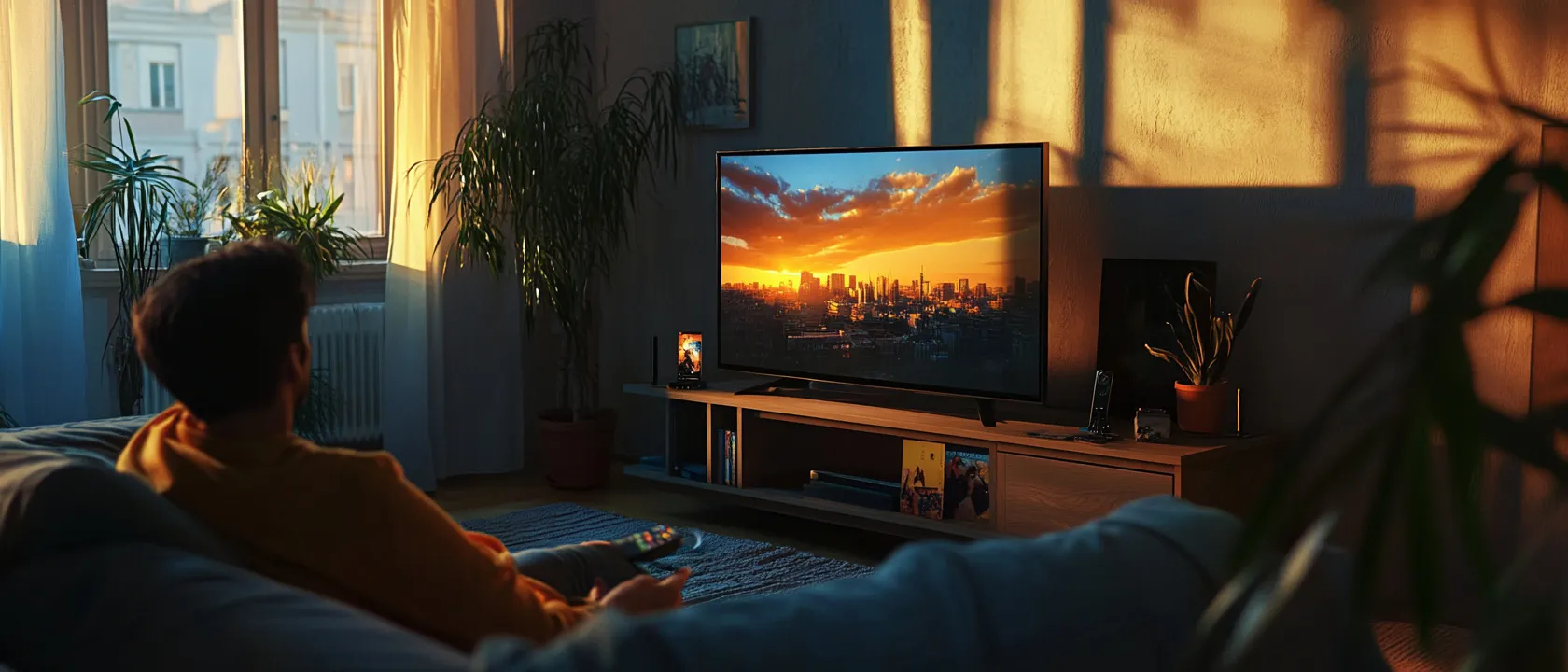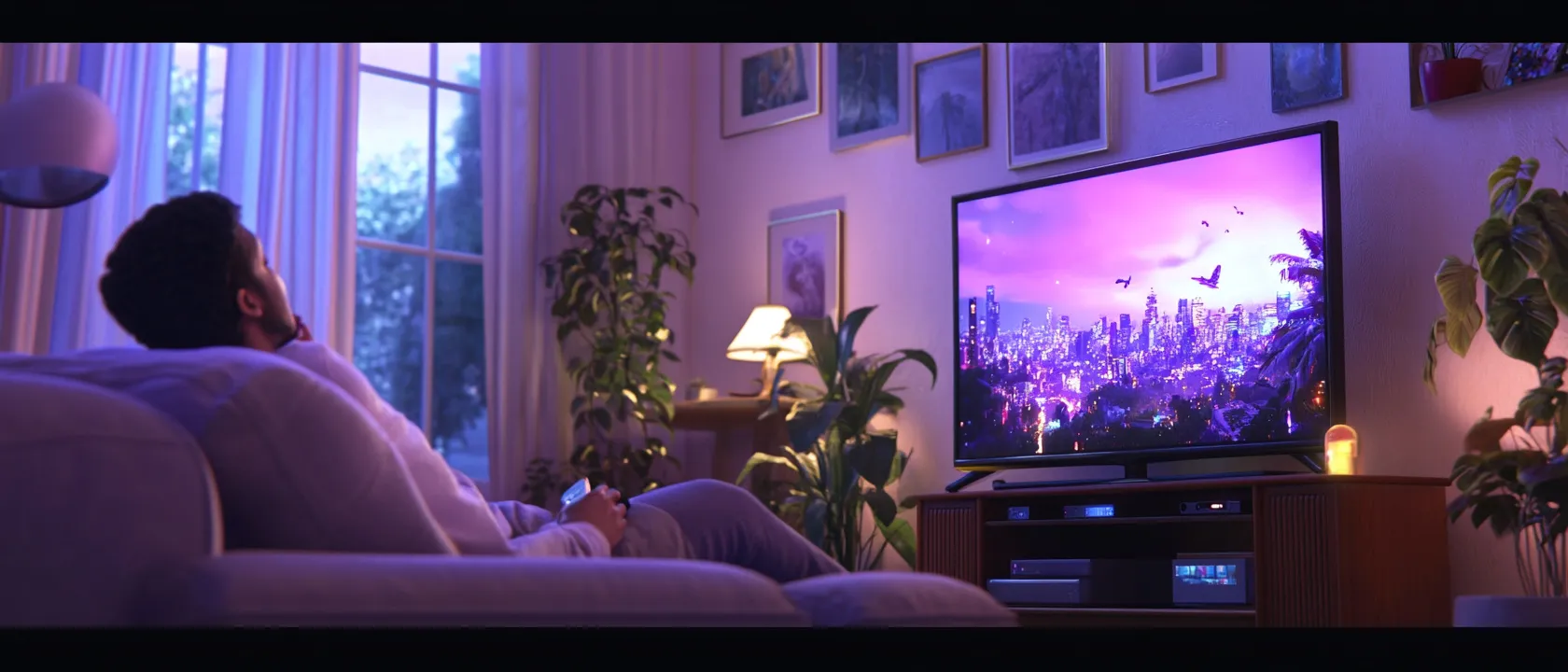In today’s increasingly complex television market, consumers face a bewildering array of technologies, specifications, and marketing terminology when shopping for a new display. Among the most prominent display technologies competing for attention are OLED, QLED, and the relatively newer Mini-LED. Each offers distinct advantages and compromises that can significantly impact your viewing experience, but understanding the technical differences and practical implications can be challenging. This comprehensive comparison aims to demystify these leading display technologies and help you determine which best suits your viewing preferences, room environment, and budget considerations.
Understanding the Fundamental Technologies
Before diving into direct comparisons, it’s essential to understand how each technology actually works to produce an image on screen, as these fundamental differences drive their respective strengths and weaknesses.
OLED (Organic Light-Emitting Diode)
OLED technology represents a fundamentally different approach to display design compared to traditional LCD-based screens. In an OLED panel:
- Each pixel generates its own light through self-emissive organic compounds
- When electrical current is applied to these organic materials, they emit light
- Crucially, each pixel can be completely turned off, producing perfect blacks
- No backlight is required, allowing for incredibly thin panel designs
This self-emissive nature creates OLED’s signature characteristics: perfect black levels, infinite contrast ratios, and wide viewing angles. The technology has matured significantly since its introduction to the consumer TV market, with manufacturers addressing earlier concerns about longevity and brightness limitations.
QLED (Quantum Dot LED)
Despite the similar-sounding name, QLED technology represents a fundamentally different approach:
- QLED is essentially an advanced form of LCD technology
- It utilizes a quantum dot layer placed in front of a traditional LED backlight
- These quantum dots are microscopic semiconductor particles that, when hit with light, emit extremely pure colors
- This allows for improved color accuracy and brightness compared to conventional LCD displays
It’s important to understand that unlike OLED, QLED screens still rely on a backlight that shines through multiple layers including the quantum dot film, liquid crystal layer, and color filters to produce the final image. This fundamental difference drives many of the comparative strengths and weaknesses between these technologies.
Mini-LED
Mini-LED represents the latest evolution in backlight technology for LCD-based displays:
- Utilizes dramatically smaller LED backlights than conventional LED-LCD TVs
- Thousands of tiny LEDs (typically measuring 0.2mm or less) instead of hundreds of larger ones
- These are arranged in numerous independently controlled dimming zones
- Often combined with quantum dot technology (sometimes marketed as “Neo QLED” or similar proprietary terms)
Mini-LED aims to address LCD’s traditional weakness in black level performance and contrast by providing more precise control over the backlight. By increasing the number of dimming zones from dozens to hundreds or even thousands, Mini-LED significantly reduces the “blooming” effect (light bleeding around bright objects on dark backgrounds) that has historically plagued LCD displays.

Key Performance Factors: A Detailed Comparison
Now that we understand the fundamental technologies, let’s examine how they compare across the critical performance factors that impact your viewing experience.
Contrast and Black Levels
OLED Excellence:
OLED maintains an unmatched advantage in contrast performance due to its ability to completely turn off individual pixels. This creates “infinite” contrast ratios (the mathematical result of dividing any brightness level by true zero) and perfect blacks that remain consistent regardless of viewing angle. This capability makes OLED particularly impressive for dark-room movie viewing, where shadow detail and atmospheric scenes benefit tremendously.
QLED Compromise:
Traditional QLED displays struggle to match OLED’s contrast performance. Despite quantum dots enhancing color and brightness, these displays still rely on LED backlights that cannot be completely turned off at the pixel level. Even with advanced local dimming (typically offering 100-500 zones in premium models), some light inevitably bleeds into dark areas, resulting in grayish blacks and haloing effects around bright objects on dark backgrounds.
Mini-LED Advancement:
Mini-LED represents a substantial improvement over conventional QLED in contrast performance. With potentially thousands of dimming zones, premium Mini-LED displays can achieve impressively deep blacks in most content. However, even the most advanced implementations cannot match OLED’s pixel-level precision. Some blooming remains visible in challenging content (like white text on black backgrounds or stars in a night sky), particularly when viewed off-angle.
Real-world implication: For critical movie watching in controlled lighting, OLED maintains a clear advantage. Mini-LED comes significantly closer to OLED performance than traditional QLED, making it an excellent compromise for many viewers, particularly in environments with some ambient light where OLED’s perfect blacks become less noticeable.
Peak Brightness and HDR Performance
QLED and Mini-LED Strength:
The most significant advantage of quantum dot displays lies in their exceptional brightness capabilities. Premium QLED and Mini-LED TVs can achieve peak brightness levels exceeding 2,000 nits in highlights, with full-screen brightness often reaching 600-1,000 nits. This extraordinary luminance capability makes HDR content with bright highlights (sun reflections, explosions, direct light sources) particularly impactful and helps these displays overcome ambient light in bright rooms.
OLED Limitations and Improvements:
OLED technology has historically been brightness-limited compared to LED-based displays. Early models struggled to exceed 700-800 nits even in small highlights, with full-screen brightness limited to around 150-200 nits to protect the organic materials from degradation. However, recent advancements have improved this considerably, with premium 2025 models achieving 1,000-1,500 nits in highlights through more efficient materials and heat management. Nevertheless, QLED and particularly Mini-LED maintain an advantage in raw brightness output.
HDR Format Considerations:
While all three technologies can support major HDR formats (HDR10, HDR10+, Dolby Vision), the different brightness characteristics impact how they render HDR content. QLED and Mini-LED often deliver more immediate visual impact in bright HDR highlights, while OLED provides superior nuance in near-black shadow details.
Real-world implication: For bright room viewing or if you particularly enjoy the “pop” of bright HDR highlights, QLED and Mini-LED offer advantages. For balanced viewing in moderately lit or dark rooms, modern OLED’s brightness capabilities are generally sufficient, while offering superior overall contrast.
Color Performance
Quantum Dot Advantage:
Both QLED and Mini-LED displays (which typically incorporate quantum dot technology) excel in color volume—the ability to maintain full color saturation at all brightness levels. This creates particularly vivid, rich colors even in very bright scenes. Premium quantum dot displays can cover nearly 100% of the DCI-P3 color space used in digital cinema and about 80-85% of the expansive BT.2020 standard targeted for future content.
OLED Color Characteristics:
OLED displays generally offer exceptional color accuracy and wide color gamuts, typically covering 95-99% of the DCI-P3 space. Where they sometimes trail quantum dot displays is in maintaining full color saturation at their highest brightness levels, as the organic materials can show some color shift when pushed to maximum power. However, in typical viewing conditions, this difference is minimal, and many viewers actually prefer OLED’s slightly warmer, more natural color presentation.
Color Processing Importance:
Beyond the panel technology itself, the quality of a TV’s color processing and calibration capabilities significantly impact real-world performance. Premium models across all three technologies now offer extensive calibration options and increasingly sophisticated AI-based processing to optimize color rendering.
Real-world implication: All three technologies can deliver outstanding color performance that exceeds what most content can even utilize. The differences are subtle enough that personal preference and individual model implementation matter more than the underlying technology.
Motion Handling and Gaming Performance
OLED’s Response Time Superiority:
OLED technology offers a dramatic advantage in pixel response time—the speed at which pixels can change state. With response times of approximately 0.1ms, OLED displays can transition between colors nearly instantaneously, resulting in exceptional clarity during fast motion without the need for extensive motion processing. This makes OLED particularly appealing for sports, action movies, and gaming.
LCD’s Inherent Limitations:
Both QLED and Mini-LED displays suffer from the inherent response time limitations of LCD technology, with typical pixel transition times of 5-10ms in optimal conditions and potentially longer for certain color transitions. This can manifest as motion blur during fast-paced content, though manufacturers implement various technologies (including black frame insertion and higher refresh rates) to mitigate these effects.
Gaming Considerations:
For gaming applications, all three technologies now support key gaming features including variable refresh rates (VRR), auto low-latency mode (ALLM), and 4K resolution at 120Hz on premium models. OLED’s faster response time provides cleaner motion for fast-paced games, while QLED and Mini-LED’s higher brightness can make games pop more in well-lit environments. Input lag is now excellent across all three technologies, with high-end models achieving under 10ms at 4K/120Hz.
Real-world implication: For competitive gamers and serious sports enthusiasts, OLED’s superior motion clarity provides a tangible advantage. For more casual viewing, the differences become less critical, particularly if the specific model implements effective motion enhancement processing.
Viewing Angles
OLED Consistency:
One of OLED’s most significant practical advantages is its near-perfect viewing angle performance. Color, contrast, and brightness remain almost entirely consistent even when viewed from extreme angles, making OLED ideal for wide seating arrangements where viewers might be positioned well off-center.
LCD Limitations:
Both QLED and Mini-LED displays use LCD panels that suffer from inherent viewing angle limitations. As you move off-center, contrast typically degrades, colors shift, and black levels rise significantly. Manufacturers have implemented various technologies to mitigate these effects (including IPS panels and optical film layers), but these solutions often involve trade-offs in contrast performance when viewed head-on.
Real-world implication: For single-viewer scenarios or narrow seating arrangements directly in front of the screen, viewing angles may not be a significant concern. However, for larger family rooms with wide seating areas, OLED’s consistent performance from any angle represents a meaningful advantage in real-world use.

Longevity and Reliability Considerations
Beyond immediate performance characteristics, long-term durability and reliability factor significantly into the value equation when investing in premium display technology.
OLED Burn-in Concerns
The organic compounds in OLED displays are susceptible to permanent image retention (burn-in) when static elements are displayed for extended periods. While manufacturers have implemented numerous mitigation technologies (pixel shifting, logo detection, panel refreshing), the risk cannot be completely eliminated. The severity and practical impact of this risk remain somewhat controversial:
- Modern OLEDs are significantly more resistant to burn-in than early generations
- Normal varied content usage presents minimal risk for most users
- Heavy use with static elements (news channels with fixed logos, certain games) increases risk
- Burn-in is typically cumulative and gradual rather than sudden
Real-world implication: For varied content viewing, burn-in risk is minimal with modern OLED displays. However, users with very specific usage patterns (like exclusive use for certain games or news channels) should consider this factor more carefully.
LED Lifespan and Reliability
QLED and Mini-LED displays generally offer excellent longevity, with LED backlights rated for 50,000-100,000 hours of use before significant degradation. These technologies avoid the burn-in concerns of OLED, though they can experience other potential failure points:
- LED backlight aging can lead to brightness reduction and color shifts over time
- Local dimming systems add complexity that could potentially fail
- Mini-LED, as a newer technology, has less established long-term reliability data
Real-world implication: Both QLED and Mini-LED technologies offer excellent longevity for typical household use, with minimal concerns about usage patterns affecting lifespan.
Energy Efficiency and Environmental Considerations
As energy costs and environmental concerns grow, the power consumption of large-screen TVs becomes increasingly relevant to many consumers.
OLED Efficiency Characteristics:
OLED power consumption varies dramatically based on content. When displaying predominantly dark scenes, OLED can be extremely efficient, as pixels generating black consume virtually no power. However, when displaying bright content (particularly full white screens), OLED consumes substantially more power. This variable consumption typically averages out to moderate efficiency for mixed content.
LED-Based Efficiency:
QLED and Mini-LED displays tend to have more consistent power consumption regardless of content. Mini-LED can potentially be more efficient than traditional QLED due to its ability to dim unused zones more aggressively, though this depends heavily on implementation. In bright room environments where higher brightness settings are used, both technologies may consume more power than OLED displaying mixed content.
Real-world implication: For typical mixed content viewing at moderate brightness levels, the efficiency differences between technologies are not dramatic enough to significantly impact most consumers’ utility bills or environmental footprint.
Price Considerations and Value Proposition
Perhaps the most pragmatic factor for many consumers is how these technologies compare in terms of price-to-performance ratio.
Premium Positioning:
OLED has historically commanded premium pricing, though the gap has narrowed as manufacturing has scaled. In 2025, entry-level 55″ OLED models start around $1,200, with premium versions reaching $2,000-3,000.
Mid-Range Value:
Traditional QLED technology has established itself in the mid-range market, with good-quality 55″ models available from $700-1,500, offering excellent brightness and color performance at more accessible price points.
New Premium Contender:
Mini-LED occupies a wide price range, with some entry-level implementations starting around $900, while premium versions with thousands of dimming zones can exceed OLED pricing at $2,000-3,500 for 55-65″ sizes.
Screen Size Value Equation:
The value proposition shifts notably at larger screen sizes. The cost differential between a 77″ OLED and a 75″ Mini-LED can reach $1,000-1,500, making LED-based technologies potentially more attractive for consumers prioritizing maximum screen size for their budget.

Making the Right Choice for Your Specific Needs
With a clear understanding of how these technologies compare across critical performance factors, we can now provide targeted recommendations based on specific use cases and priorities.
For the Cinephile and Critical Viewer
If you primarily watch films and premium TV content in controlled lighting and value image quality above all else:
Best Choice: OLED provides the most theater-like experience with perfect blacks, exceptional contrast, and natural color reproduction. Its only meaningful disadvantage for this use case—somewhat lower peak brightness—becomes negligible in appropriate viewing environments.
Solid Alternative: Premium Mini-LED with 1,000+ dimming zones offers impressive contrast that approaches OLED quality while potentially offering brightness advantages for daytime viewing.
For the Bright Room Environment
If your TV is positioned in a sunlit living room or you frequently watch during daytime hours:
Best Choice: High-end Mini-LED combines excellent brightness capabilities with improved contrast compared to traditional QLED, making it ideal for overcoming ambient light while still delivering impactful HDR.
Solid Alternative: Mid-to-high-end QLED offers similar brightness advantages at potentially lower price points, though with some compromise in contrast performance.
For the Serious Gamer
If gaming represents a significant portion of your usage:
Best Choice: OLED’s instantaneous response time and perfect pixel control provide the clearest motion and most responsive experience, particularly beneficial in competitive fast-paced games.
Solid Alternative: Mini-LED gaming monitors and TVs with high refresh rates and gaming-specific features offer excellent performance with potentially higher brightness for well-lit gaming environments.
For the Value-Conscious Consumer
If maximizing performance per dollar is your primary concern:
Best Choice: Mid-range QLED offers excellent color performance, good brightness, and solid overall picture quality at accessible price points, particularly in screen sizes above 65 inches.
Solid Alternative: Entry-level Mini-LED is becoming increasingly affordable while offering meaningful contrast improvements over standard QLED technology.
Conclusion: No Perfect Universal Solution
The reality of today’s TV market is that there is no single “best” technology for all viewers and environments. Each technology offers distinct advantages that align differently with various priorities:
- OLED excels in dark-room video quality, contrast precision, viewing angles, and motion clarity
- Mini-LED delivers impressive brightness, strong contrast, and excellent color volume
- QLED offers proven reliability and strong value, particularly at larger screen sizes
The good news for consumers is that all three technologies have reached impressive levels of maturity, with even mid-range options delivering picture quality that would have seemed remarkable just a few years ago. Your specific room environment, viewing habits, and budget considerations should ultimately guide your decision rather than abstract technical superiority.
As these technologies continue to evolve—with innovations like QD-OLED hybrid displays and MicroLED on the horizon—the distinctions between them may eventually blur. For now, understanding the fundamental differences between OLED, QLED, and Mini-LED allows you to make an informed choice that aligns with your specific viewing priorities and environment, ensuring your investment delivers the optimal experience for your unique situation.







